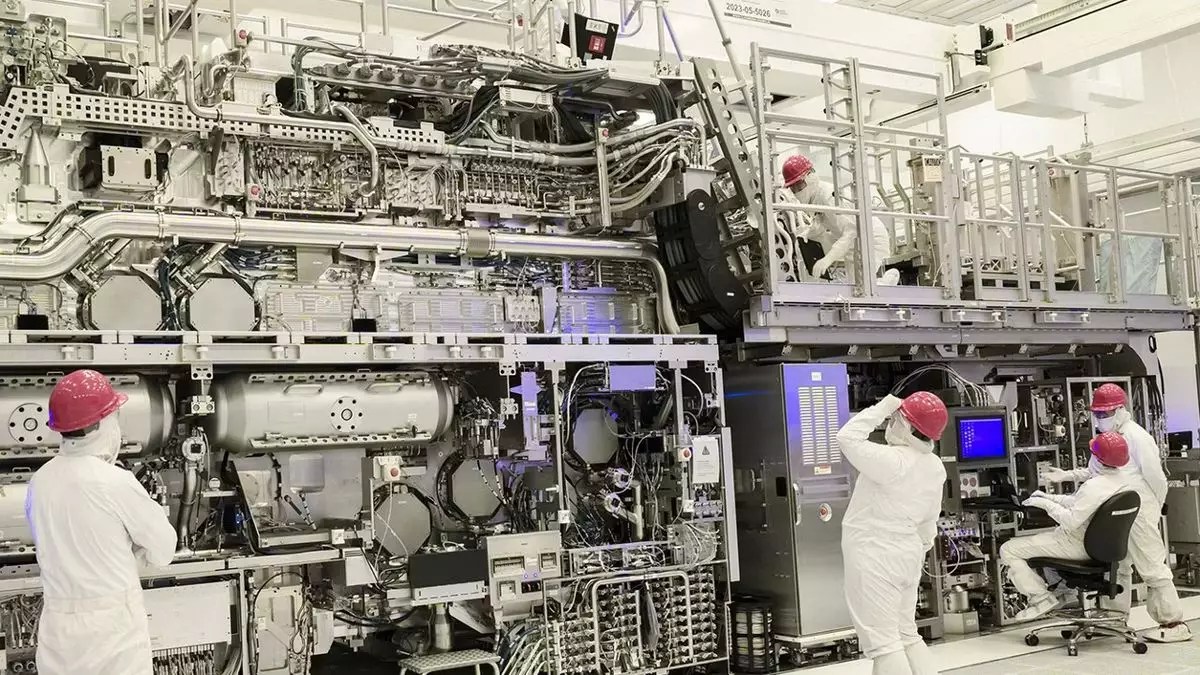Intel has taken a bold step by unveiling its readiness for the much-anticipated 18A chip production node, as highlighted on their website. This announcement brings with it a mix of excitement and skepticism, particularly for enthusiasts and professionals in the tech industry. But what does this really mean for the future of personal computing, and is Intel genuinely on the cusp of a breakthrough or merely engaging in a strategic marketing maneuver?
Intel’s forthcoming Panther Lake laptop chip is slated to be partially produced using this new 18A node technology. However, while preparations are underway for volume production later this year, consumers won’t see the fruits of this labor until at least early 2026. The same timeline applies to the desktop CPU, Nova Lake, which is also positioned for a 2026 release. The timing raises eyebrows—especially considering the rapid pace of advancements from competitors like TSMC.
Intel proudly proclaims the readiness of the 18A node for customer projects, noting that tape-outs are scheduled to commence in the first half of 2025. This seems strategic; while asserting readiness, Intel appears to focus on enticing potential clients for their foundry services. However, a discerning eye might question the significance of this readiness when prominent projects, such as the Clearwater Forest server CPU, have already seen delays. Initially expected in 2025, Clearwater Forest is now postponed until 2026, which could imply doubts surrounding the actual capabilities or usability of the 18A process.
Intel’s ambitious “five nodes in four years” initiative—known colloquially as 5N4Y—has come under scrutiny. The progression from Intel 7 to 18A raises questions about the reality of what constitutes a new node. For example, Intel 7 is fundamentally a version of technology that faced challenges in its earlier iterations. On the other hand, while Intel 4 was genuinely new, it can be seen as a mere rebranding of the previously intended 7nm node. This pattern of renaming suggests that only Intel 4 and 18A are truly groundbreaking offerings, further clouding the perception of Intel’s innovation narrative.
This criticism may carry weight, especially given the prolonged struggles Intel has faced in keeping pace with rivals. The uncertainty surrounding the entire 5N4Y program could lead industry observers to view the announcement of 18A’s readiness as a calculated PR strategy rather than a substantive technical milestone.
Among the crown jewels of Intel’s claims for the 18A node are impressive statistics concerning performance and efficiency: a potential 15% boost in performance per watt and a 30% increase in chip density compared to Intel’s predecessor, the Intel 3 process. Additionally, 18A is touted as the first sub-2nm advanced node produced in North America, providing an alternative to reliance on Taiwanese foundries.
A look at the technological innovations, such as PowerVia and RibbonFET transistor technology, reveals that 18A may introduce significant enhancements in chip design. PowerVia promises improved power delivery efficiency, while RibbonFET is expected to decrease power leakage and improve control over electrical current flow in chips. There is an undeniable allure to these advancements, suggesting that if they perform as advertised, they could make the 18A node a formidable competitor in the marketplace.
Despite the optimistic projections surrounding Intel 18A, there remain significant concerns when juxtaposing it against TSMC’s offerings. Current evaluations suggest that while 18A may not be as dense as TSMC’s upcoming N2 node, it does indeed match N3’s SRAM density—crucial for efficient on-chip cache memory. Notable is the fact that TSMC has not yet integrated behind-the-scenes power delivery into their upcoming nodes, giving Intel a potential edge.
Yet, even with this advantageous technology, the road ahead for Intel is fraught with challenges. The company’s future hinges on the effective execution of the 18A node. CEO Pat Gelsinger’s declaration that he has “bet the whole company” on its success adds immense pressure to deliver on these bold promises. In an industry driven by rapid innovation and fierce competition, any missteps could potentially lead to more expensive chips and a further decline in Intel’s market standing.
While Intel’s announcement regarding the 18A node creates a buzz of potential excitement, it also warrants a cautiously optimistic examination. Will this advancement usher in a new era for Intel, or will it ultimately prove to be another overblown marketing initiative? The coming years will shed light on whether the company can capitalize on these promises and reclaim its position within the fabric of technological advancement. Industry stakeholders and consumers alike will be keeping a watchful eye on how Intel navigates this critical juncture in its history. Let’s hope for Intel’s success, as competition is essential for fostering innovation and maintaining reasonable pricing for consumers.


Leave a Reply